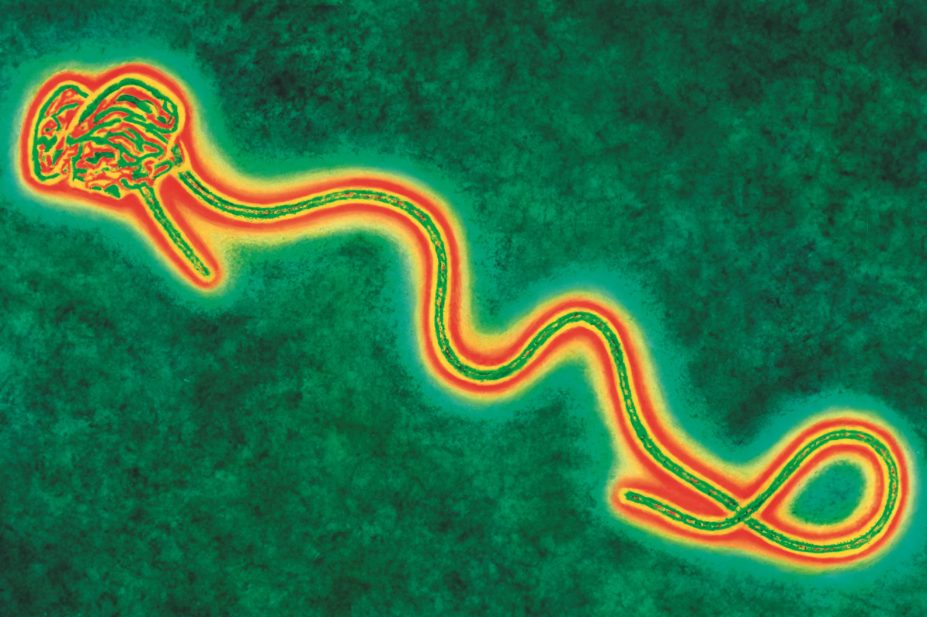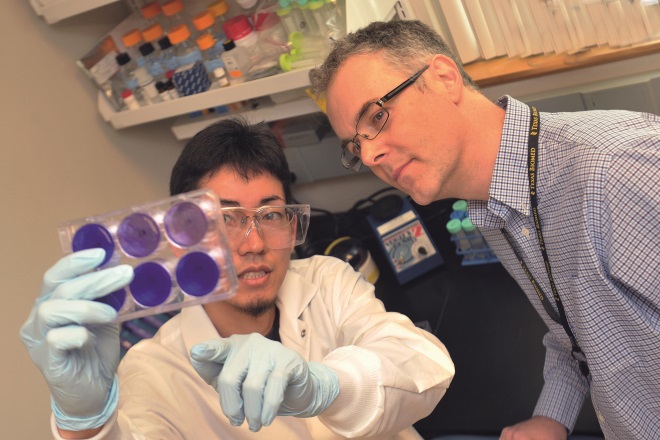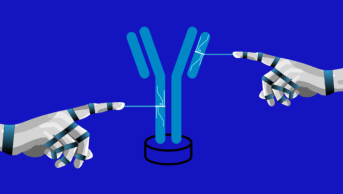
London School of Hygiene & Tropical Medicines / Science Photo Library
Scientists have identified an important pathway used by the Ebola virus to gain entry into cells that may lead to new therapeutic approaches.
Using cell culture, the researchers, led by Robert Davey from the Texas Biomedical Research Institute in San Antonio, show that Ebola virus particles are contained in cellular structures called endosomes[1]
. To successfully complete infection, they deduced that the virus particles must pass through the endosomal membrane via a calcium channel called two-pore channel 2 (TPC2) and spread throughout the rest of the cell.
“When we block TPC function using a drug, the virus is locked in an endosome and can’t escape to infect the cell,” says Davey. “The cell can then destroy the virus and prevent infection.”
Viral entry into cytoplasm is a critical, committal and irreversible step in Ebola virus infection. The virus particles trick the cell to engulf those using endosomes. “We were the first to show [this],” says Davey.
After leakage into cytoplasm, the virus replicates and then spews the genome out of the cell. “However, if you don’t get entry you don’t get anything downstream so it is a good way to stop [the] spread of virus,” says Davey.
“It took until 2012 before we realised that TPC proteins were the root cause and then two more years to understand that they were controlling the way the virus moves into cells,” he adds.
The finding that the virus requires TPCs for infection was the first step to target them with drugs.

Source: Texas Biomedical Research Institute
Robert Davey, from the Texas Biomedical Research Institute in San Antonio, and his team have discovered how the Ebola virus can be destroyed
Davey’s team tested an array of drug compounds that they thought could block the TPCs (TPC1, TPC2) — for example, gabapentin, an anticonvulsant, and the calcium channel blockers verapamil, nimodipine, diltiazem and tetrandrine, an alkaloid from a Chinese vine.
Gabapentin did not work, and tetrandrine was the most potent small molecule in terms of blocking TPC2. The researchers found that the drug inhibited infection of human macrophages, the primary target of Ebola virus in vivo, and showed therapeutic efficacy in mice.
Darryl Falzarano from the University of Saskatchewan, Canada, and one of the authors of an accompanying perspective article, says that while TPC’s exact role is unknown, Davey’s team has shown that it is necessary for the virus to infect. “From a basic research perspective [this] finding is exciting,” he says.
TPCs are evolutionarily conserved and are genetically similar in mice and humans. But Davey and team need to prove tetrandrine’s potency beyond mice: in macaques, the gold standard non-human primate model for Ebola treatment, before it is available for human use. “This is being done over the next few months,” says Davey. “If the macaque work goes well, we will request funding for Phase 1 and 2 trials”.
But for Falzarano, tetrandrine cannot be a go-to drug for treating Ebola. Considering its channel-blocking action, he believes, it can only be a prophylactic or part of combination therapy. And since tetrandrine is not widely approved yet, “this is a long way off”, he says.

